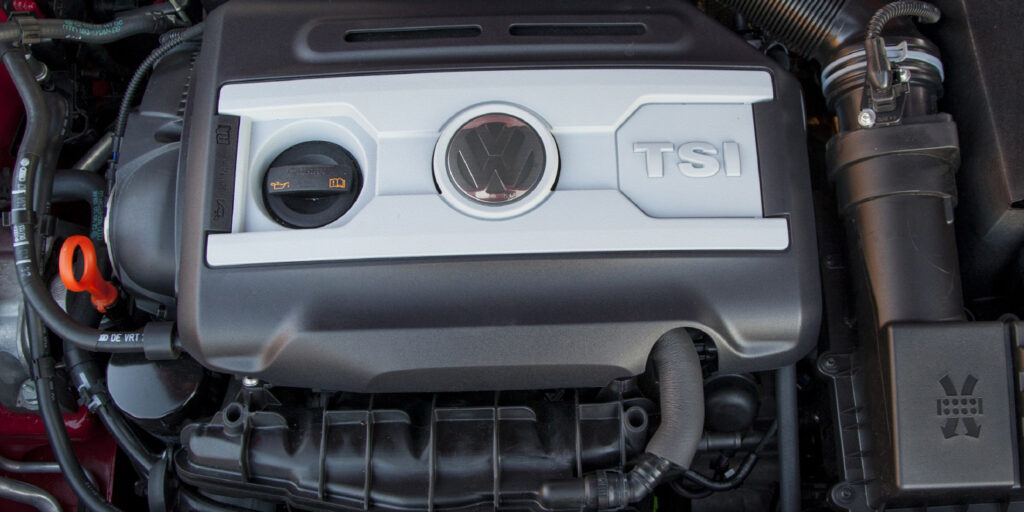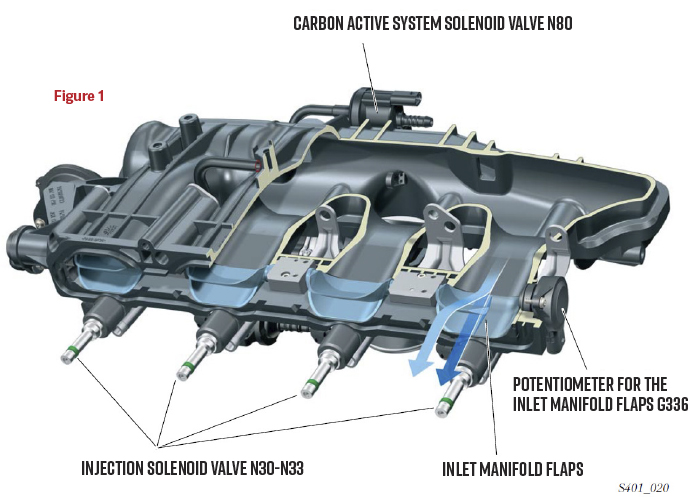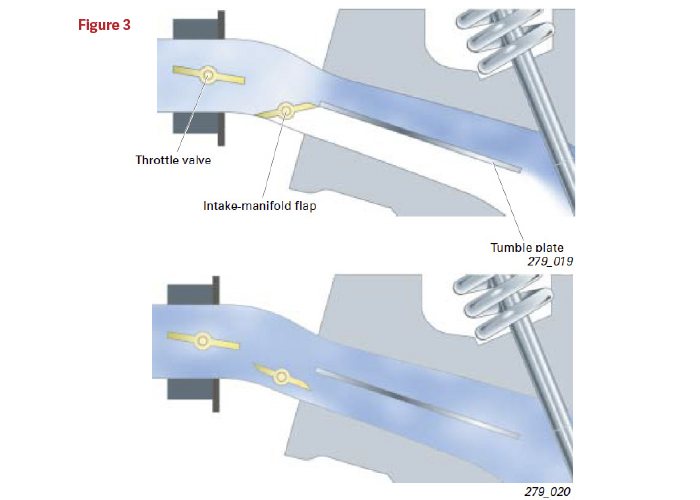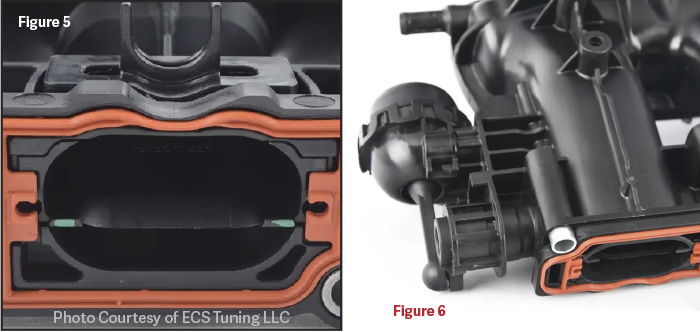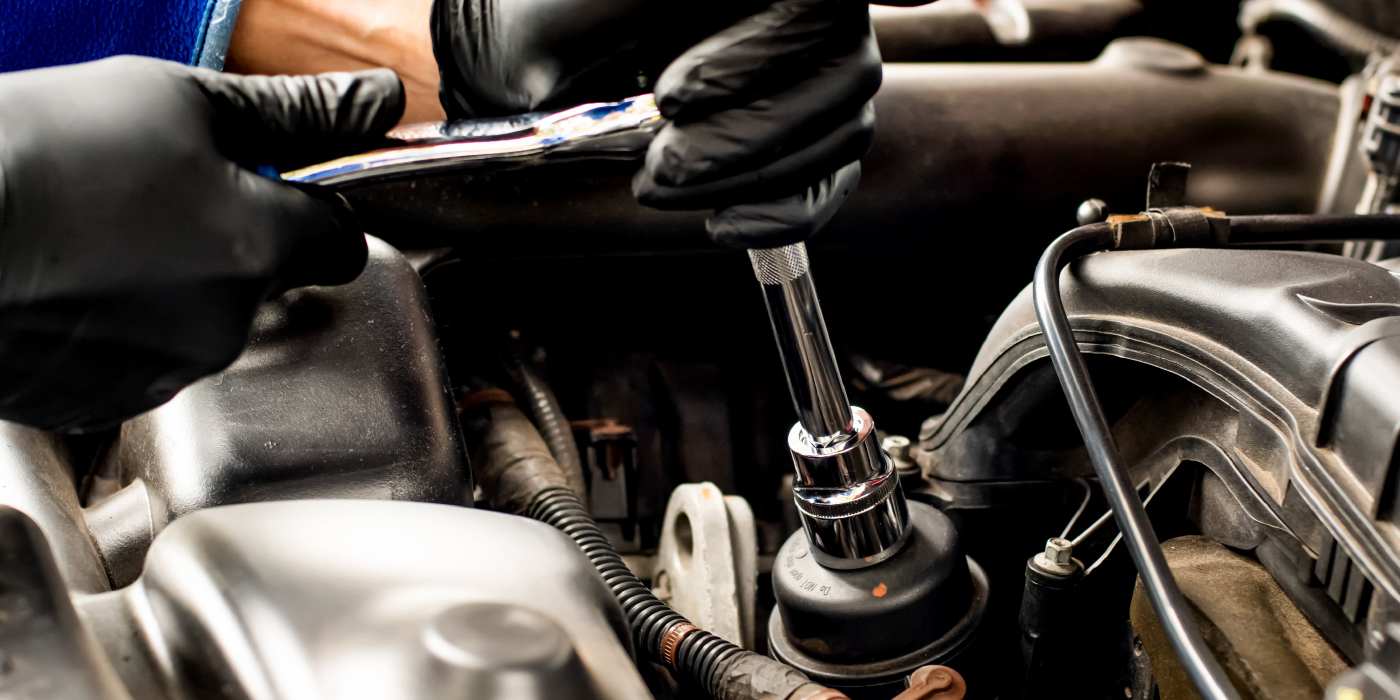TSI Intake Manifold Failures
Many owners of TSI-equipped VWs and Audis have experienced performance or drivability concerns which include poor idle, power loss, random cylinder misfires, and an illuminated check engine light with a P2015 code. These symptoms are most commonly tied to faulty intake manifolds, but what exactly is it that fails?
Construction
The intake manifold is composed of two polyamide shells which are plastic-welded together. Trough-shaped flaps, also known as tumble valves, can be found inside each intake port (Figure 1). A potentiometer is used to measure the flap position (Intake Manifold Runner Position Sensor G336). The flaps are closed when the engine is not running, and will open once certain running criteria have been met.
Thanks to their shape, as well as their arrangement in the intake port, the airflow is improved when the flaps are in the open position. When they are closed, they cause the air to tumble, or swirl, into the combustion chamber (Figure 2).
So, why would we want the air to tumble or swirl? We all know that a football will travel farther and straighter with a spiral; the same goes for air flowing through the manifold. Tumbling air offers a number of advantages, but only at certain engine speeds and load conditions. This is why the valves need to be able to open and close based on driving conditions and other criteria.
Tumble Valve Operation
Vacuum is applied to the actuator to cycle the tumble valves open or closed. Herein lies the weak point of the system – the plastic linkage. If the flaps were to become stuck due to carbon buildup, then the plastic linkage could easily bind up and snap. This linkage is not serviceable separately, so the entire manifold needs to be replaced. These issues were so common that later production units were revised with more robust linkage to resist breakage (Figure 2).
Tumble valves (Figure 3) were first used in FSI engines to actively switch between two modes of operation: Stratified charge operation and homogeneous operation. FSI and TSI engines use the tumble valves to switch from a stratified charge operation in the part-throttle range and a homogeneous air/fuel mixture in the full-throttle range. The ability to switch between these two modes helps to optimize the engine operation throughout the rev range while maximizing power and efficiency (Figure 4).
Tips & Tricks
Start with your normal diagnostic process. If you see a P2015 code in the ECM, or another code pertaining to the tumble valve/runner flaps, remove the air box to access to the side of the intake manifold. Remove the vacuum hose from the actuator and try to cycle the linkage by hand. If you can’t move the linkage by hand, it’s time to remove the intake manifold and look for carbon buildup inside (Figure 5).
The manifold will also need to be replaced if you find that the linkage has broken off, or if the cam inside the manifold has snapped off (Figure 6).

